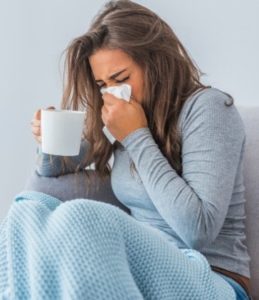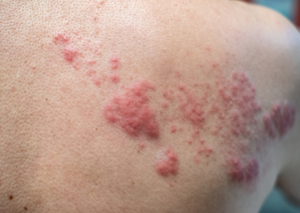In case you were unaware, your business and facility are full of germs. Don’t believe us? Here are some headlines from recent magazine articles and reports comparing how filthy common surfaces and equipment are compared to the average public toilet seat.
Breaking News: Average desk contains 400 times more germs than a toilet seat, new research reveals – The Independent.
FYI, Your Kitchen Is Probably Dirtier than a Toilet Seat – Food & Wine.
Although every surface in your building may not contain as many bacteria as a toilet seat, we’re pretty sure there are many microorganisms dwelling throughout your facility that can cause infection and sickness. Even seemingly innocent-looking items like the microwave door handle, the copy machine button, and desks can have MRSA, Staph, influenza, norovirus and other pathogens on them.
Regardless of the type of facility you operate, manage or own and despite your best efforts to eradicate them through routine sanitizing and disinfecting, germs will always find their way into your business.
HOW ARE GERMS TRANSMITTED AROUND YOUR FACILITY?
You may have questions like, how do these germs get into your business in the first place? Where do they come from? How are germs transmitted? Here are three ways bacteria and viruses get passed around businesses and facilities.

BODILY FLUIDS
One way germs are transmitted in your facility is through bodily fluids. You may automatically assume only feces and urine are responsible for this. However, there are other bodily fluids that spread infection and disease such as spit or saliva. Spit and saliva can project pathogens into the air from coughing, sneezing and even talking.
The contaminated air droplets can then be breathed in by someone nearby or in passing. A common infection that spreads via saliva and spit air droplets is influenza, aka the flu. Vomit, blood, and sweat are also known to carry infections from surface to surface and person to person. In fact, some of the top diseases that spread via blood, vomit, and sweat are norovirus, MRSA, and hepatitis B. How do pathogens like these get on surfaces and equipment? Here are a few examples.
EXAMPLES OF HOW GERMS GET ON EQUIPMENT AND SURFACES
- When someone sweats on a piece of gym equipment during a workout but doesn’t use a disinfectant or sanitizing wipe to remove the germs afterward.
- If an employee cuts themselves while preparing food and their blood drips on a table, but proper disinfection protocols aren’t followed.
- A guest or customer coughs into their hand and touches a door handle or countertop, and the surface is not disinfected by the end of the day.
- A person with norovirus uses the restroom but doesn’t wash their hands and continues to come into direct contact with surfaces throughout your facility.

PEOPLE WITH EXISTING INFECTIONS
When we ask, “How are germs transmitted in my facility?”, it’s crucial not to overlook one variable that managers and owners have little control over, no matter how diligent your efforts are to keep your facility clean and safe. That is people entering your facility with existing infections, including employees.
With 55% of employees admit to coming to work ill, the chances are high that someone is coming into your office while still contagious. This can wreak havoc your hard work to keep your business free of germs. In addition to your employees, many customers still run errands and try to keep up with their day to day life when they are sick. When an infected person enters your facility they spread bacteria as they talk, sneeze, cough, and touch surfaces.
They’re also putting others at risk. People who are infected with influenza (especially during the early stages), norovirus, and rhinovirus feel sick but still consider themselves well enough to continue through their day as usual. These infections are highly contagious, dangerous, and can be life-threatening. If an infant, elderly person or someone with a weak immune system acquires the infection it can be disastrous.

CONTAMINATED SKIN
Still asking yourself “how are germs transmitted?” Think bare skin and feet. Each year, around 90,000 Americans contract MRSA, over 119,000 contracted a staph infection in 2017, and countless others will develop ringworm and/or athlete’s foot at least once in their lifetime. These are all common skin infections that are highly contagious and very difficult to treat and get rid of. They are also on-going, last much longer, and unpredictable.
You would think people would cover up cuts and sores with band-aids, wear socks, or remain fully clothed while visiting your facility but they don’t. They will walk around barefoot and wear tank tops and short-sleeved shirts all while transmitting germs each time they come into direct contact with a surface or piece of equipment.
People with existing skin infections also fail to stay home while contagious. They too will go to work, the gym, and other places – leaving the pathogen on anything they touch. Aside from MRSA, Staph, and ringworm other skin infections include cellulitis, erysipelas, impetigo, and folliculitis. Such spores can live on towels, clothing, benches, and other surfaces for as long as 20 months unless killed with an EPA registered disinfectant.
CLEANING IS KEY TO PREVENTING THE SPREAD OF GERMS
At this point, it’s probably clear that some people visiting your facility will bring bacteria, fungus, and viruses with them. But since you can’t ban or prevent them from entering, how can you prevent germs from contaminating your business? The key is constant and consistent cleaning, sanitizing, and disinfection.
It’s been proven that facilities with a solid and structured cleaning schedule don’t see as many reported illnesses than others. Constant cleaning ensures germs are being eradicated before they can cause harm and helps you stay ahead of any contagious infections that your visitors might be bringing in with them.
No matter how proactively you clean your facility, germs will always find a way to get in. But prioritizing cleanliness and remaining aware of the consequences if you fail to clean can keep everyone, and everything, safe.
